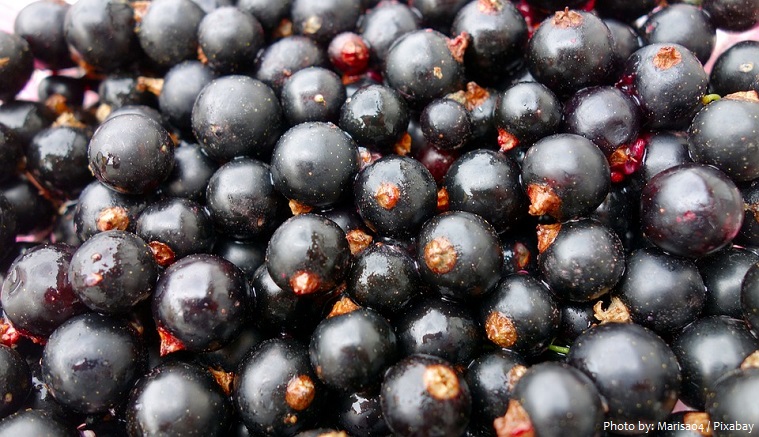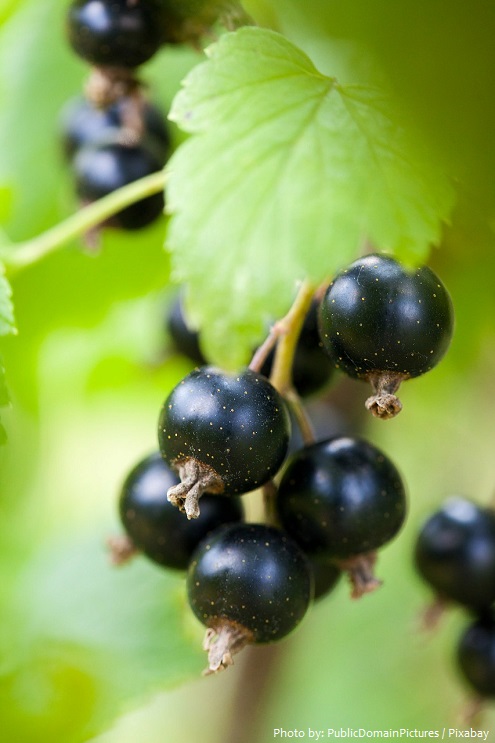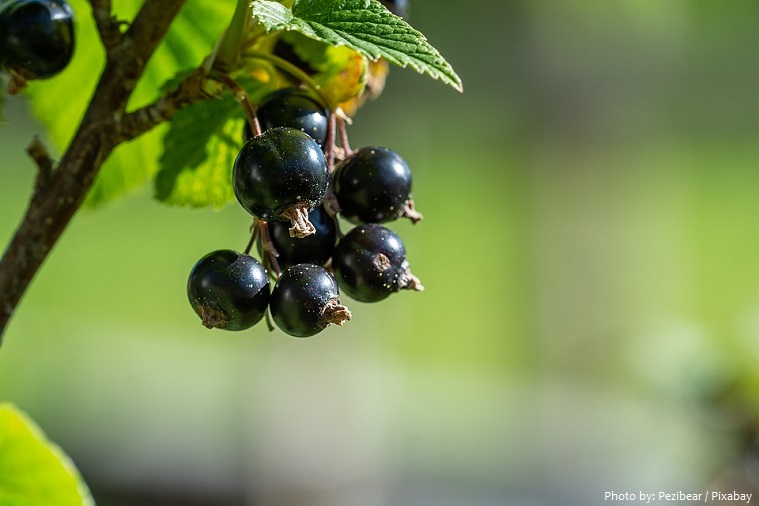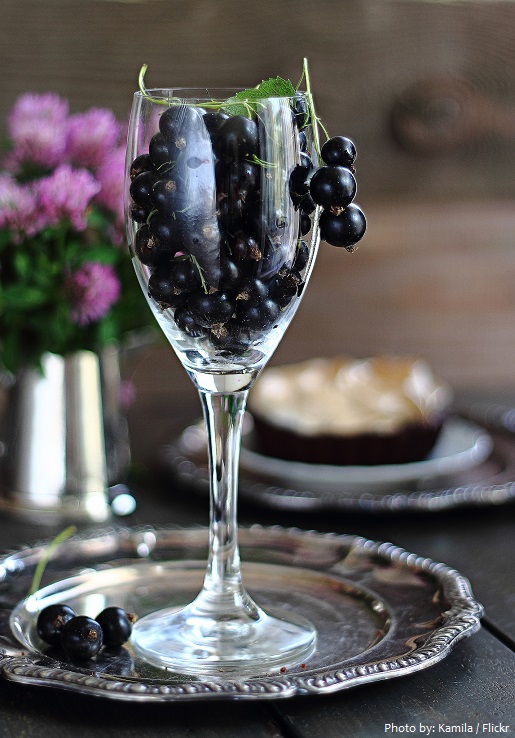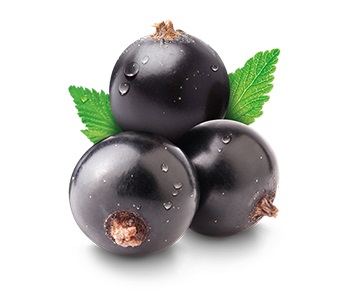The blackcurrant or black currant (Ribes nigrum) is a woody shrub in the family Grossulariaceae grown for its piquant berries.
It is native to temperate parts of central and northern Europe and northern Asia.
The blackcurrant was cultivated in Russia by the 11th century when it was present in monastery gardens and also grown in towns and settlements.
Cultivation in Europe is thought to have started around the last decades of the 17th century.
Blackcurrants are were banned in the United States in the early 1900s because they spread a fungus that kills white pine trees.
During World War II, most fruits rich in vitamin C, such as oranges, became difficult to obtain in the United Kingdom. Since blackcurrant berries are a rich source of the vitamin and blackcurrant plants are suitable for growing in the UK climate, the British Government encouraged their cultivation and soon the yield of the nation’s crop increased significantly.
The modern-day commercial cultivars of blackcurrant are significantly advanced from their wild progenitors, with a range of desirable attributes selected within the available germplasm by breeders in Europe and beyond.
Blackcurrants can grow well on sandy or heavy loams, or forest soils, as long as their nutrient requirements are met.
It is a medium-sized shrub, growing to 1.5 by 1.5 metres (4.9 by 4.9 feet).
The leaves are alternate, simple, 3 to 5 cm (1.2 to 2.0 in) broad and long with five palmate lobes and a serrated margin.
The flowers are produced in racemes known as “strigs” up to 8 cm (3 in) long containing ten to twenty flowers, each about 8 mm (0.3 in) in diameter. Each flower has a hairy calyx with yellow glands, the five lobes of which are longer than the inconspicuous petals. There are five stamens surrounding the stigma and style and two fused carpels.
Bunches of small, glossy black fruit develop along the stems in the summer and can be harvested by hand or by machine.
The fruit of blackcurrants can be eaten raw, but it has a strong, tart flavour. It can be made into jams and jellies which set readily because of the fruit’s high content of pectin and acid.
For culinary use, the fruit is usually cooked with sugar to produce a purée, which can then be passed through muslin to separate the juice. The purée can be used to make blackcurrant preserves and be included in cheesecakes, yogurt, ice cream, desserts, sorbets and many other sweet dishes.
There are 63 calories in 100 grams (3.5 ounces) of blackcurrants.
Besides the whopping amount of vitamin C in these little beauties, they also contain pantothenic acid (vitamin B5), pyridoxine (vitamin B6), and thiamin (vitamin B1). Iron is an important mineral, as well as copper, calcium, phosphorus, manganese, magnesium, and potassium.
The health benefits of redcurrants include boost the strength of the immune system, keep cardiovascular system healthy, helps in controlling high blood pressure, helps in controlling diabetes, provides relief from insomnia and anti-viral benefits. It also provides relief from circulatory problems and strengthens our bones and teeth.
Decoction of the leaves, bark or roots was also used as traditional remedies.
Components in the leaves of the blackcurrant increase the secretion of cortisol by the adrenal glands, thus stimulating the activity of the parasympathetic nervous system, which may prove useful in stress-related conditions.
Its nickname of “quinsy berry” came as a result of it being used to treat an inflammatory condition of the tonsils called quinsy.
In Russia, blackcurrant leaves may be used for flavouring tea or preserves, such as salted cucumbers, and berries for home winemaking.
Sweetened vodka may also be infused with blackcurrant leaves making a deep greenish-yellow beverage with a tart flavour and astringent taste.

